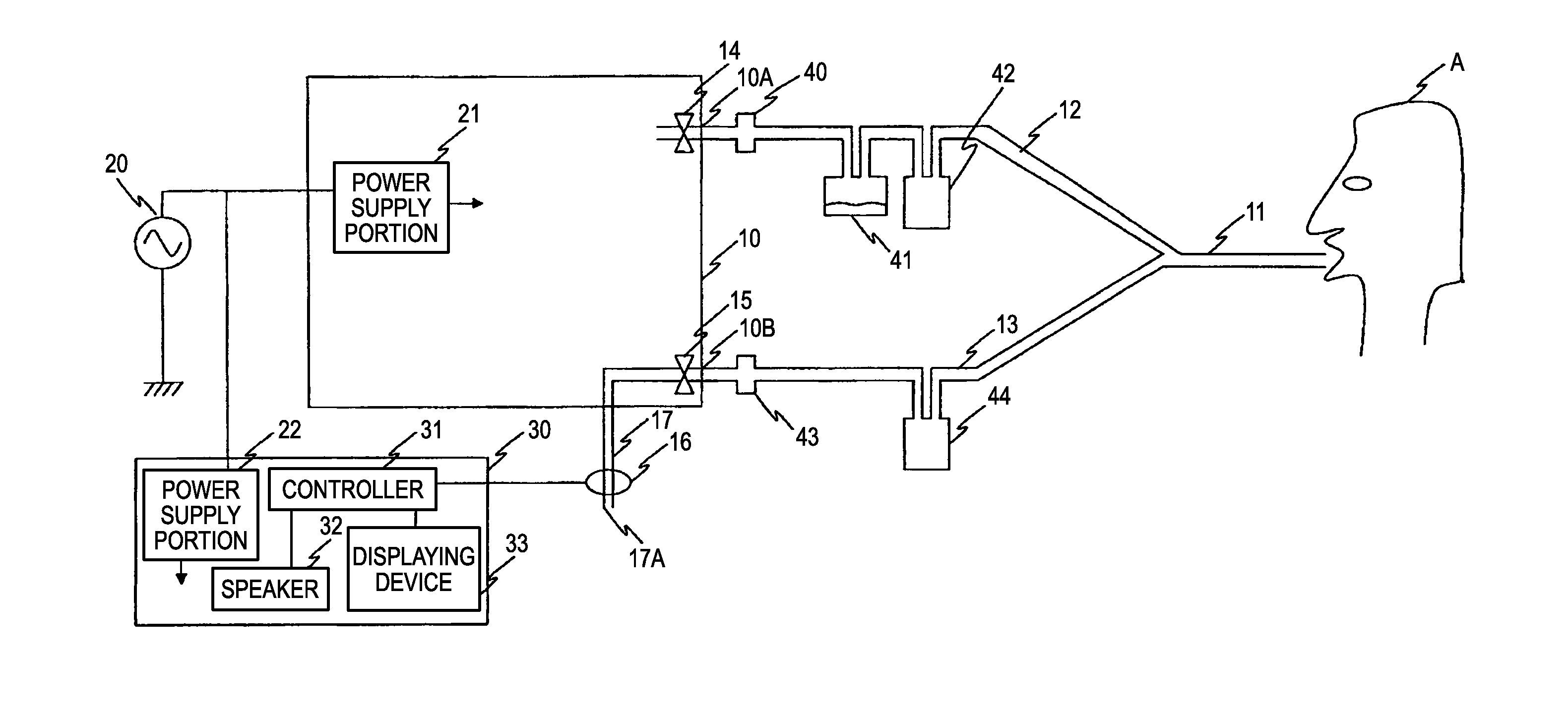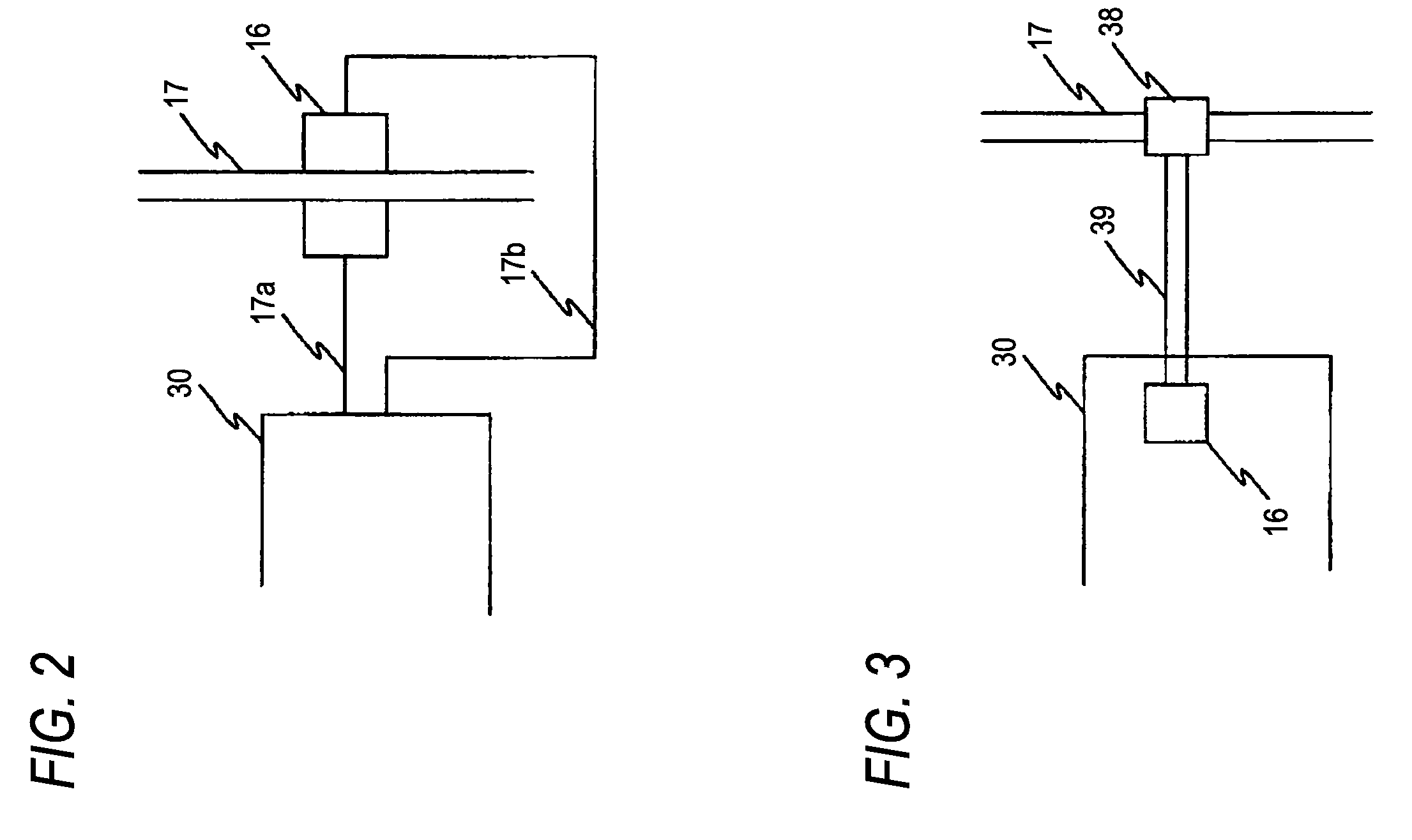Artificial ventilation apparatus
a ventilation apparatus and artificial technology, applied in mechanical devices, valves, respirators, etc., can solve the problems of alarm malfunction, inability to detect the disconnection of the connecting portion, and serious affecting the patient, so as to reduce the number of parts that can be easily attached and detached, and improve the safety.
- Summary
- Abstract
- Description
- Claims
- Application Information
AI Technical Summary
Benefits of technology
Problems solved by technology
Method used
Image
Examples
first embodiment
[0031]Hereinafter, embodiments of the artificial ventilation apparatus of the invention will be described with reference to the accompanying drawings. In the figures, the identical components are denoted by the same reference numerals, and duplicated description will be omitted. FIG. 1 shows the configuration of an artificial ventilation apparatus of a The artificial ventilation apparatus includes a ventilator 10 which outputs a gas having a required oxygen concentration for artificial ventilation, at a required pressure.
[0032]A connecting portion 11 which is connected to the respiratory system of the patient A is attached to the respiratory system. The connecting portion 11 is configured by a mask, a conduit tube intubated into the trachea, or the like. An inspiratory circuit 12 which is a flow path for flowing the gas from the ventilator 10 to the connecting portion 11 connects between a gas outlet 10A of the ventilator 10 and the connecting portion 11. In the inspiratory circuit...
second embodiment
[0046]FIG. 5 shows the configuration of an artificial ventilation apparatus of a In the artificial ventilation apparatus, a ventilator 110 includes a controlling portion 25. The controlling portion 25 is similar to a corresponding related-art portion, i.e., controls the operation of the apparatus based on biological information of the patient A and apparatus information of the apparatus, monitors the patient A and the apparatus to display required parameters, and, in case of abnormality, generates an alarm. The biological information means information related to the living body, such as the arterial oxygen saturation, the blood pressure, the body temperature, the respiratory rate, and the airway pressure. In FIG. 5, only a pressure sensor 26 which is disposed in the connecting portion 11 in order to obtain information of the airway pressure is shown.
[0047]The apparatus information of the apparatus is operation information of the ventilator 110, information such as the pressure and ...
PUM
 Login to View More
Login to View More Abstract
Description
Claims
Application Information
 Login to View More
Login to View More - R&D
- Intellectual Property
- Life Sciences
- Materials
- Tech Scout
- Unparalleled Data Quality
- Higher Quality Content
- 60% Fewer Hallucinations
Browse by: Latest US Patents, China's latest patents, Technical Efficacy Thesaurus, Application Domain, Technology Topic, Popular Technical Reports.
© 2025 PatSnap. All rights reserved.Legal|Privacy policy|Modern Slavery Act Transparency Statement|Sitemap|About US| Contact US: help@patsnap.com



